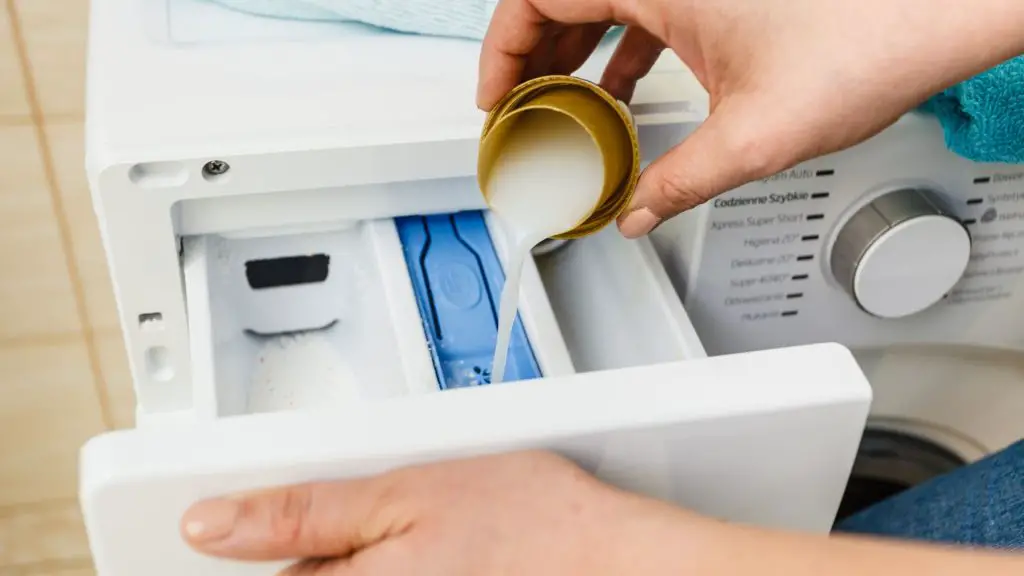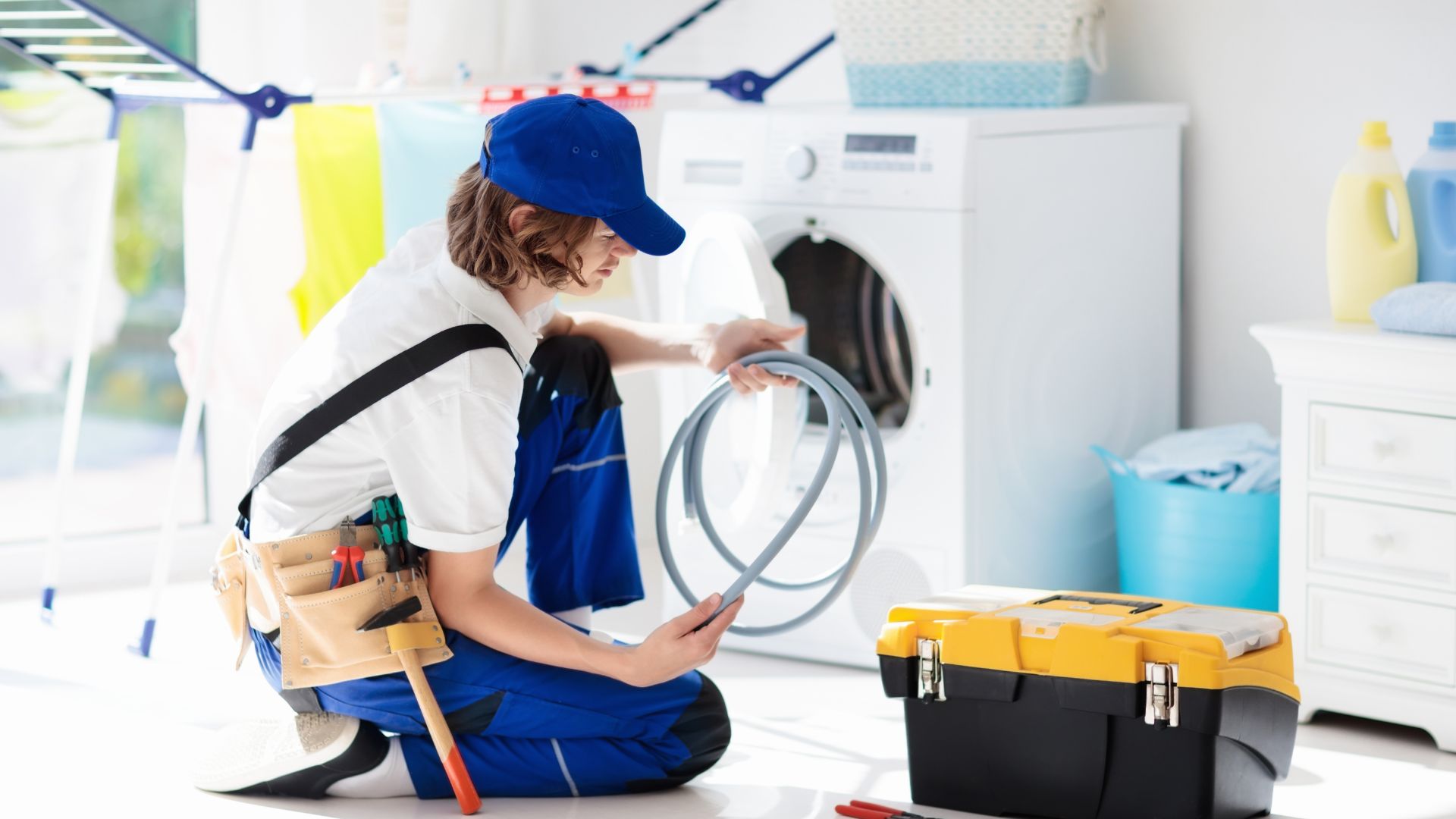Fabric softener dispensers are convenient because they automate the process of adding softener to the load. As such, you don’t want them to stop working.
Why Is My GE Washer Not Dispensing Fabric Softener
GE washer is not dispensing fabric softener because you have not activated the function yet. Or perhaps, the dispenser is dead or clogged.
1). Function Not Activated
Have you checked the settings? A fabric softener dispenser is supposed to dispense the fabric softener automatically. But it cannot do so unless you program the washer accordingly. Like every other tool, the washer can’t perform a function unless you activate that function.
The device wouldn’t dispense the softener until you select ‘Deep Rinse.’
GE washers are not all the same. You can’t use the instructions from a different washer to activate the dispenser in your machine.
Check the manual. It will show you how to select and activate the fabric softener dispenser. Those instructions may differ from the methods detailed in another GE washer manual. If you can’t find the manual, talk to GE customer support.
Send your serial number and wait for the customer support personnel to identify your model. They will guide you on the best way to activate the dispenser. Talk to a technician if you can’t access GE’s customer support team.
Most technicians have a basic understanding of the workings of a washer. Even without the manual, you can trust a licensed and experienced expert to identify the controls and settings that activate the washer.
Some models will allow you to determine when the washer adds the fabric softener. For instance, you can program the machine to add the softener in the last rinse. Other washers are not that sophisticated.
2). Dead Dispenser

Like the washer, dispensers have limited lifespans. Some of them will wear out after months or years of frequent use. Others can break because of a severe fault, possibly even a factory defect.
Regardless of the reason, once a dispenser stops working, repairs are not always an option.
Get a new dispenser. These parts are relatively inexpensive. If you have a tight budget, talk to a technician. Ask them to look at the dispenser. They will determine whether or not the component is reparable.
If they encourage you to get a new one, you should listen. If you have the money and the dispenser has a severe but fixable defect, you should replace it all the same. Even if the technician repairs the component, it will break down in a few weeks or months.
A new dispenser will give you peace of mind. Once again, you should start by reaching out to GE customer support. Submit your serial number and ask them to recommend a replacement. A technician can probably find you a cheaper dispenser from a different brand.
But you are better off using GE replacement parts. If you have a warranty, the company may give you the new dispenser for free. Depending on the warranty, they may also compel you to send the washer to a GE repair shop.
Asking a local technician to open the washer and troubleshoot the dispenser may void your warranty. Proceed carefully.
3). Clogging
Blockages are unavoidable. The frequency of the clogging will depend on how much use the washer gets. These blockages can interfere with the dispenser’s functions. Some dispensers will become less reliable, delivering the fabric softener in insufficient quantities.
Others will stop dispensing the softener altogether. Some blockages are severe enough to prevent the washer from working. Fortunately, clogging is not particularly difficult to diagnose, and the solution is relatively straightforward.
If the dispenser is clogged, you have one option. Clean the dispenser, a process that involves the following:
1). Find the dispenser. The location will vary depending on the model. Wikihow has published an image showing a top-loading machine with the dispenser under the lid. Lift the lid and check the corners. If you can’t locate the component, look for the detergent dispenser.
These two items are next to one another. But that is not true for every washer. Get the manual and look for the part.
2). Determine whether the fabric softener dispenser is removable. Some dispensers are removable while others are not. Removable dispensers are the most convenient because they are relatively easy to clean.
3). You can buy commercial cleaners if you want, but homemade solutions are just as effective. You need half a gallon of warm water, a quarter cup of dish detergent, and eight ounces of bleach.
4). Wear protective gloves and dispensable clothing. The last thing you want is for splashes of bleach to ruin your favorite shirt.
5). Make sure the container with the solution is large enough for you to submerge the dispenser. Try to execute this step gently to prevent unnecessary splashing. Leave the dispenser alone for ten minutes. You can agitate the container every few minutes to dislodge the debris.
6). Take the dispenser out of the container and wipe it clean. Don’t proceed until the dispenser is completely dry. Use a toothbrush to reach every corner.
7). Once you’re satisfied with your work, put the dispenser back in the machine. Make sure you’ve cleaned the housing. There is little point in placing the dispenser in a dirty, grimy compartment. Dip the cloth in the bleach solution and wipe the housing.
This assumes that your dispenser is removable. What if you can’t remove the component? Clean the item from where it is using a solution of warm water and liquid detergent. Because you can’t soak the dispenser, your only option is to pour the solution into the compartment.
Do this slowly before running a ‘Warm Rinse’ cycle. This will circulate the solution, cleaning the dirt, grime, and gunk. It may take several rinses for the cleaning solution to do its part. Some blockages are more severe than others.
One bucket of the cleaning solution won’t be enough. Pour additional buckets in between cycles. You can remove the remaining gunk with a damp cloth. Wipe all the debris you can see away.
Some dispensers are removable, but this isn’t obvious at a glance. You can confirm your theory by checking the manual and following the instructions on removing the component.
You don’t have to follow the steps above. Ultimately, any procedure that removes the dirt and grime will resolve the issue. Elaborate cleaning solutions are not always necessary. For instance, the experts at SFGATE clean their dispensers by rinsing the items under a hot water tap.
They use their fingers to remove debris. Although, they also perform a soak later on. So clearly, soaking is an essential step. Tough clogs will respond to vinegar.
Related Post:

